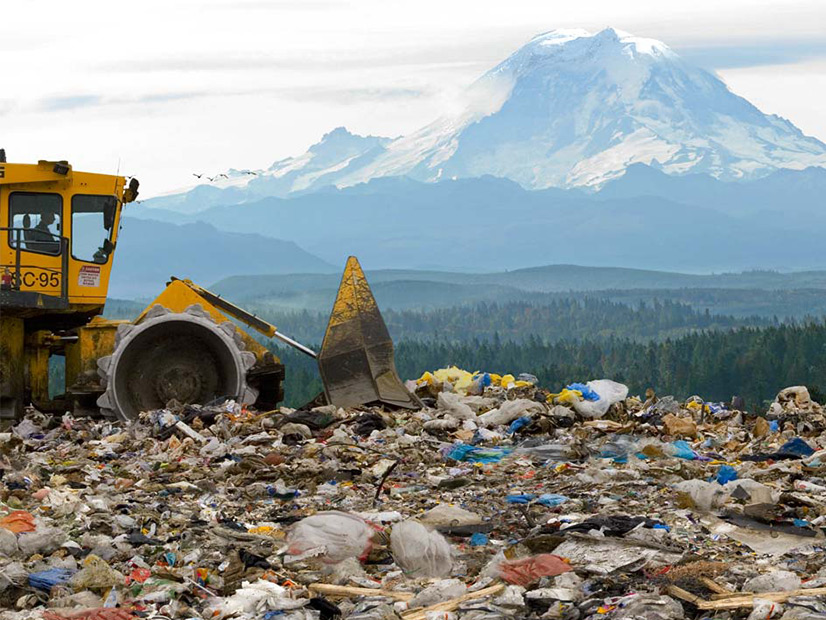The King County government and the Port of Seattle have allocated $500,000 to study whether to develop a Seattle-area landfill into a source for electric power or biofuel.
However, the scale and scope of the study must still be mapped out, a process that could last through the summer. The study is not expected to be finished until 2023, officials said.
The port and county are teaming up on the study for separate reasons. The port wants to explore the production of biofuels to provide to jet airliners using Sea-Tac International Airport, which the port owns and operates. It does not have a timetable on how fast it expects to ramp up the use of biofuels to blend with regular petroleum-based fuel, concentrating instead on getting such an effort started.
Meanwhile, the county government is looking at expanding its one landfill, which is expected to be full by 2028. One avenue to justify that expansion while trimming the amount of trash — officially called “municipal solid wastes” — is to build a plant to burn much of the garbage to create raw materials for biofuel refineries or to create electric power, port commission President Fred Felleman and King County Councilmember Kathy Lambert said in separate interviews.
The study must address whether a raw-materials-for-biofuels or electric-power facility should be built, both said.
They said numerous other questions need to be addressed, such as costs, materials found in the landfill, how raw landfill material has changed over the years, future demands for electricity and what technologies to consider.
The U.S. has at least 70 waste-to-energy plants, mostly in the Atlantic states, according to a recent briefing Lambert gave the King County Council. Only four are on the West Coast, with one in Spokane, Wash. Lambert said this type of venture has been successful in Europe, citing long-functioning waste-to-energy plants in Copenhagen and Hamburg.
Landfills contribute to climate change with their methane emissions — a more potent greenhouse gas than carbon that does not last as long in the atmosphere.
Methane accounted for 10% of the nation’s GHG emissions in 2019, according to U.S. Environmental Protection Agency figures. Landfills account for 17% of the nation’s emitted methane, behind fuel production at 30% and livestock manure, burps and flatulence at 27%, according to EPA figures.
A facility to produce electricity or to create raw materials for biofuel refineries would trim the amount of methane emissions from the landfill at the King County town of Maple Valley, Lambert said. “The people living there would be oh-so-happy to have that [methane] gone,” she said.
King County also has seven closed landfills. Lambert speculated that trash could be dug out of these to burn in a power plant or biofuels raw-material facility. “We should be able to go in and mine them,” she said.
She pointed to a landfill-mining-and-power venture by the University of Texas. Teaming with the town of Denton, Texas, the university looked at mining landfill material to feed an electric plant in 2016. But by 2017, local officials concluded that the costs of operating such a facility would be greater than the revenue that it produced and dropped the project.
Another wrinkle to consider is that the Pacific Northwest does not have a biofuels refinery on the drawing board to use raw material created from a landfill. The Northwest has two biofuel refineries being developed — both being designed to use wood chips and forest slash as their raw materials. One is a $1.5 billion project in Grays Harbor County near Washington’s Pacific Coast. The other is a $320 million project in Lakeview, Ore.
